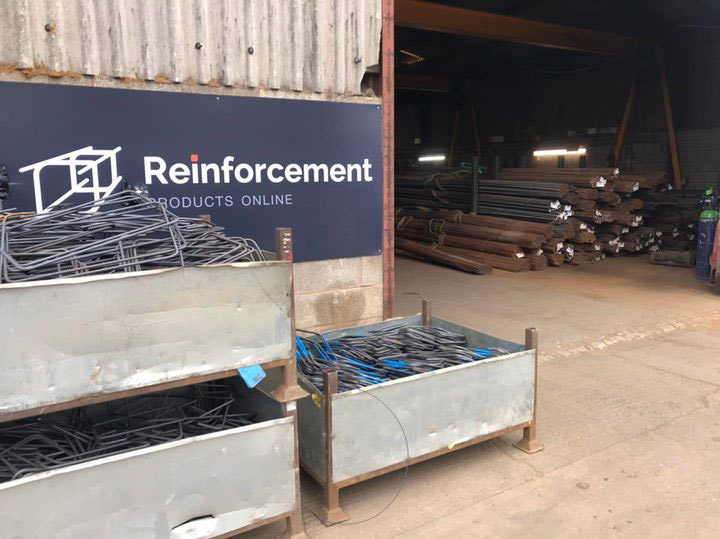We use cookies to make your experience better. To comply with the new e-Privacy directive, we need to ask for your consent to set the cookies. Learn more.
Rebar Sizes: A Complete Breakdown
If you’re preparing to begin a concrete construction project, you may have determined that rebars will be necessary while planning and purchasing materials. When reinforced bars are used in concrete construction projects, reinforced concrete is created.
Whether the project includes posts, walls or floor slabs, rebar can help prevent cracks from forming that could cause the project to fail. While all concrete will crack, using reinforced bars makes it possible to control the extent of any cracking and where it occurs whilst providing greater structural strength for the project.
Are you looking for reinforcement for your upcoming project? Look no further. Competitive Rates, Experienced Team Rapid Delivery. RPO.
When choosing reinforcing bars, stainless steel rebars are are good choice thanks to their high resistance to corrosion. The stainless steel coating improves protection against corrosion when bars are open to the environment, or in areas where high levels of corrosion are expected (i.e. in areas near to sea water; in reinforcing piers and bridges) . However, not only does this come at a much higher cost, and can push your project budget up significantly, but it is also unnecessary if the steel reinforcement is placed correctly, and the concrete used is appropriate.
This is why it is so important in structural concrete projects since it offers stronger support when compared with reinforcing fibreglass, steel wires or any other products available on the market today since it supplies structural strength itself.
There are many grades and sizes of steel rebar available which all provide different strength levels. As a result, you can easily select the perfect structural solution for the project that you’re working on.
However, you need to be aware of the various rebar sizes and weights so that you can be well-informed. As this is quite a complex area of the construction industry to navigate, a certain level of skill and knowledge is necessary to select the correct size of rebar for any given project.
Here, we take a look at the various reinforcement steel bar dimensions and sizes in the UK to help you make an appropriate choice.
Rebar Sizes And Weights
Here is a guide to the various reinforcement steel bar sizes and dimensions in the UK:
| Bar Size | Mass (Kg per metre) | Dimensions | Metres per tonne |
|---|---|---|---|
| T8 (8mm) | 0.395 | 10mm | 2531 |
| T10 (10mm) | 0.616 | 12mm | 2531 |
| T12 (12mm) | 0.888 | 14mm | 1126 |
| T16 (16mm) | 1.579 | 19mm | 633 |
| T20 (20mm) | 2.466 | 23mm | 405 |
| T25 (25mm) | 3.854 | 29mm | 259 |
| T32 (32mm) | 6.313 | 37mm | 158 |
| T40 (40mm) | 9.864 | 46mm | 101 |
Take advantage of our free rebar and mesh weight calculator!
UK Steel Regulations And Requirements On Tensile Strength
Reinforcement steel is widely used in the construction industry, and while not every project using concrete needs steel reinforcement bars, they’re typically used when constructing masonry and buildings since it supplies strength to the concrete while absorbing tension.
As a result, slabs will be prevented from breaking apart, structures will gain durability, and protection will be provided against corrosion.
While rebar size is important when utilising reinforcement bars on construction projects, its quality is also a key consideration.
Fortunately, there are standards which must be adhered to and which govern the mechanical, chemical and physical properties of rebar to ensure consistency and safety in all construction projects on which they are used.
There are various regulations and requirements in the UK when it comes to steel and tensile strength. These must be complied with to ensure that concrete structures are safe for use.
Stainless steel rebar must be manufactured to BS 6744 standard to be suitable for use on UK construction projects. Stainless steel rebar must also have a proof strength of 500 N/mm2 and an ultimate tensile strength of 550 N/mm2. Bars can be cut to the length of your choice and bent according to BS 8666 shape codes.
Why Are Different Sizes Of Rebar Necessary?
Reinforcement bars in concrete give a structure uniform integrity. Although concrete itself is strong in compression, it has virtually no tensile strength and therefore, eventually, concrete will fracture and bend easily. Selecting the right rebar weight and size is vital to ensuring safe construction practices.
Different rebar sizes will be necessary depending on the type of project you are working on. A rebar with a smaller diameter of 8mm or 10mm may suffice for domestic and smaller-scale projects such as patios or driveways which bear a minimal load and, therefore, create a low level of tensile stress.
Meanwhile, when constructing columns, piers or walls, a rebar of 8mm or greater must be used, and for foundations and building footings, a rebar of at least 10mm in diameter is the best choice to minimise settling.
When it comes to civil engineering, large-scale projects like tunnel or bridge construction, a rebar with a higher diameter is necessary, especially if a long span is required.
Installing the correct size of rebar is essential for the project’s overall success, and rebar must be replaced evenly throughout a project.
British Standard 4449: 2005 is the relevant specification for steel rebar within the UK, and this national standard replaced the European reinforce of concrete standard.
Tensile Strength As A Consideration
When using rebar, its tensile strength (or yield strength) is a vital consideration. This is a measurement which indicates the steel’s overall strength.
Heavy-duty rebar should be made from high-yield steel with grade 500 reinforcement which has a tensile strength or yield strength of 500 N/mm2 (or Mpa). Under British Standard 4449:2005, the maximum yield strength permitted is 650 MPa (or N/mm2).
It’s important to be aware that changing the rebar size by increasing its diameter won’t make it doubly strong. While the yield strength will increase, it is the grade of steel which will affect its strength more.
Rebar Size And Placement Accuracy
Additional care must be taken during rebar placement before the concrete is poured. The concrete’s yield strength may be compromised severely should the placement be incorrect.
It is absolutely crucial to take precise measurements since mistakes of only one or two centimetres when spacing rebars could reduce the concrete’s tensile strength by as much as 20%.
Not only that, but choosing an incorrect size of rebar may result in a reduction in reinforcement by up to 35% and this could mean that insufficient reinforcement will be provided for the structure’s integrity and strength.
Frequently Asked Questions About Rebar Sizes
What are standard rebar sizes?
Here are the standard rebar sizes:
- T8 (8mm)
- T10 (10mm)
- T12 (12mm)
- T16 (16mm)
- T20 (20mm)
- T25 (25mm)
- T32 (32mm)
- T40 (40mm)
What are the standards for steel rebar?
The most common grades for steel rebars are 40, 60, 75, 80, and 100. These figures represent the yield each rebar offers. So a grade 40 bar has a 40 KSI minimum yield strength, for example.
What do the letters on the rebar mean?
The initial symbol identifies where the rebar was produced, the second marking is for the size of the bar, and the third making identifies the type of reinforced steel, such as W for low-alloy steel, or S for carbon-steel.
What are the common types of steel used for rebar?
- Carbon Steel Rebar.
- Low-Alloy Steel Rebar.
- Stainless Steel Rebar.
- Epoxy-coated Carbon Steel Rebar

Looking for Steel Reinforcement?
Look no further. Competitive Rates, Experienced Team, Rapid Delivery.
Of course, if you need any guidance or advice on the correct rebar or mesh products for your next construction project, just get in touch with us today for a chat with a member of our friendly and experienced team.





